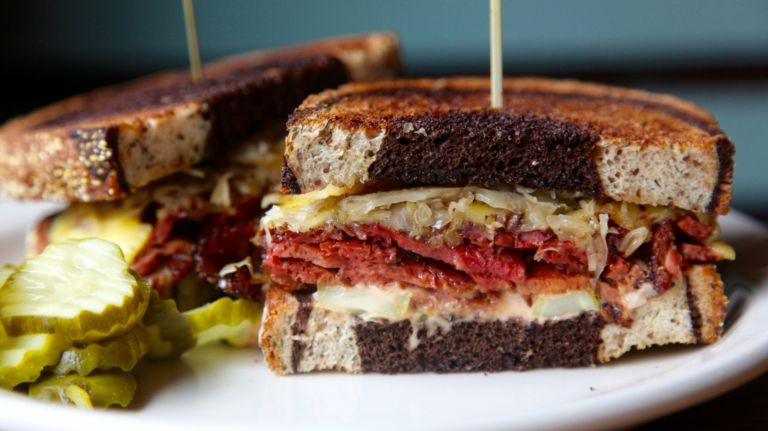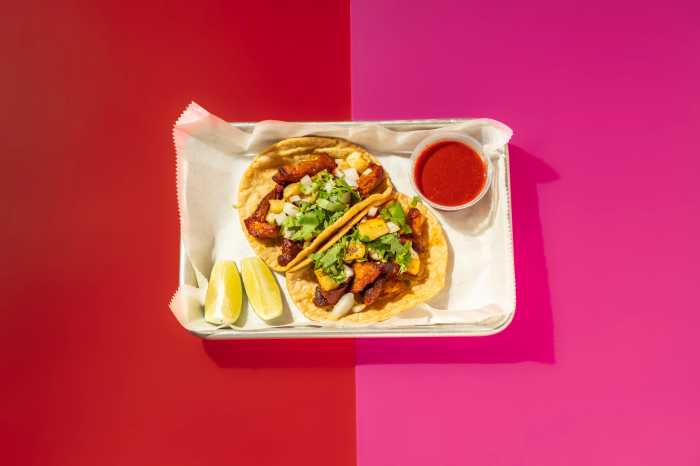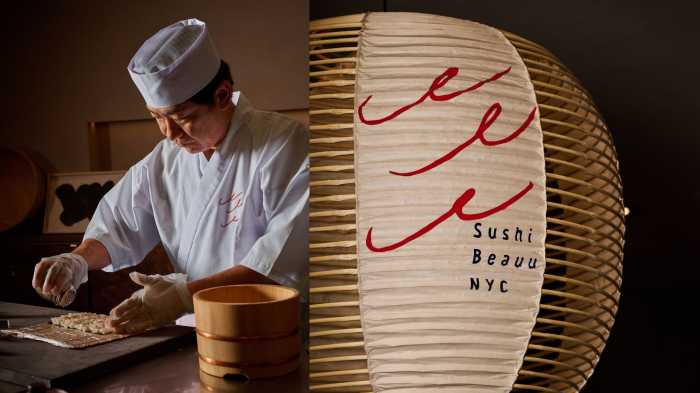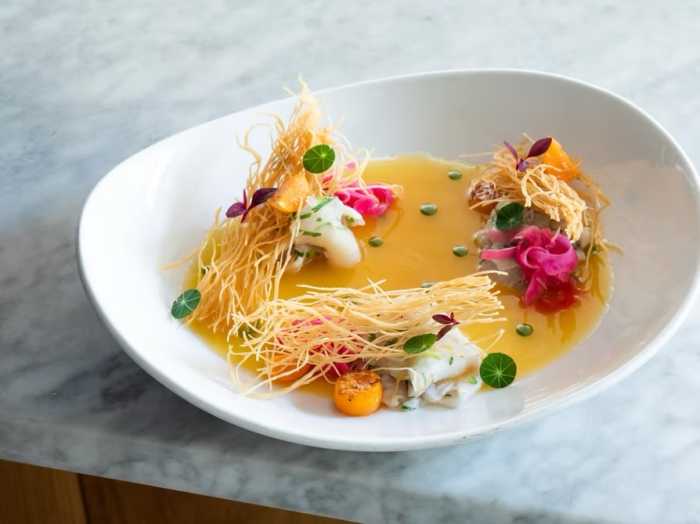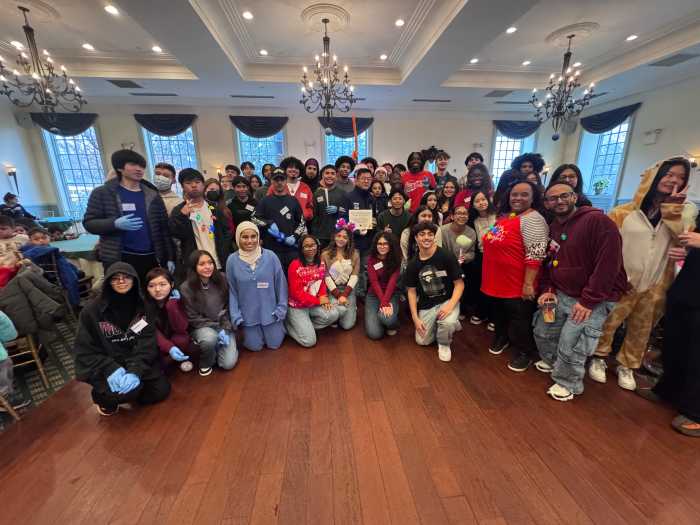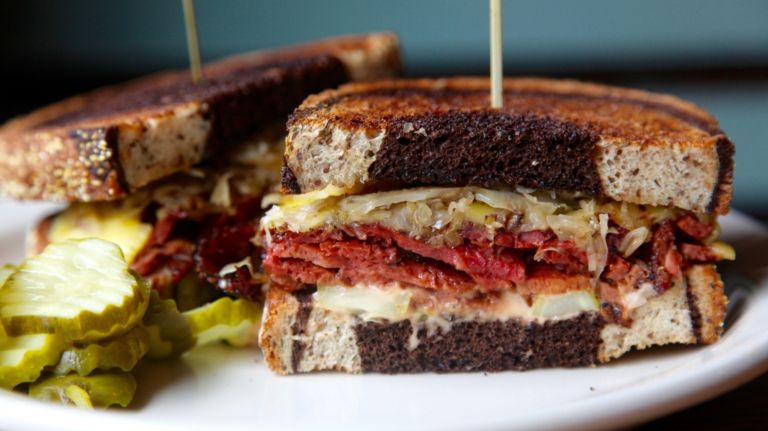
From Burger King’s Impossible Whopper to Taco Bell’s promise of vegan meat and cheese options, vegan replacements for our favorite indulgent foods are becoming more and more common. As awareness increases for the environmental and health impacts of eating meat, it makes sense. But getting meat lovers excited about vegan cuisine — which is traditionally thought of as leafy, healthy food — isn’t the easiest task.
Still, restaurants across New York are up for the challenge and have been expanding their menus to be more accessible for the growing vegan community, as well as tempting outsiders to take a break from burgers and fried chicken.
Both full vegan eateries and regular restaurants have a few different strategies up their sleeves — and they are all mouthwatering and decadent.
Converting meat lovers
“The motivation behind adding vegan items to the menu was a little bit of appeasing the large vegan crowd that we now have in the city,” said Nick Testa, head chef at gastropub The Bonnie in Astoria, Queens, “and also just introducing really delicious vegan items to those who may be standoffish about meatless dishes by doing some classics that they know.”
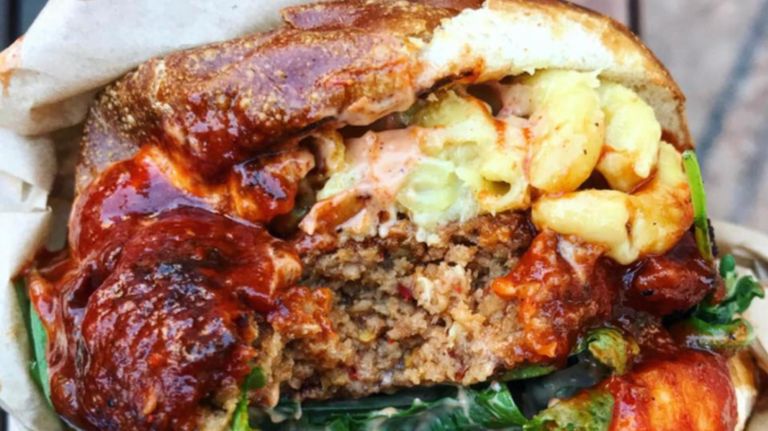
The “classics” that Testa introduced on their elevated bar food menu are a vegan banh mi "sausage" roll and a vegan "pastrami" Reuben made with seitan (a vegan protein with similar texture to meat).
The country’s first vegan organic food truck, Cinnamon Snail, has since expanded to a brick and mortar location at The Pennsy food hall in midtown Manhattan, and the website says its vision was to “lure unsuspecting non-vegans to the dark side.
“Our goal is to get people excited about vegan food who don’t normally eat it,” said chef and founder Adam Sobel. “For that reason, we try to create especially flavorful and bold menu items that will exceed a meat eater’s expectations of what vegan food is like.”
A menu loaded with options like “burgers” with BBQ sauce and jalapeño mac n’ cheese, Tater Tots, and breakfast burritos definitely turns traditional vegan food on its head.
Feeding comfort
And that’s one almost fail-proof way to appeal to non-vegan eaters: with ooey, gooey, “fatty” comfort food.
“There has been for a long time a misconception that vegan food has to be health food, and it’s an image that really doesn’t attract closed minded non-vegetarian eaters,” Sobel said.
“I try to create comfort food that is decadent and satisfying and just happens not to be made out of animals, so that people who don’t yet understand veganism can be attracted and will have their experience of plant-based eating expanded.”
Calexico, the restaurant named for the hybrid town on the border of California and Mexico, just added ground beet as an option to its menu of tacos, burritos and nachos, mostly because of the vegan and vegetarian members on their staff. But it was important for them to have the veggie option mesh with their already hearty, feel-good menu.
“We are who we are!” said co-owner Dave Vendley. “We’re serving comfort food — we sometimes call it high-end stoner food. We want to be true with who and what we are, while still giving our guests great options.”
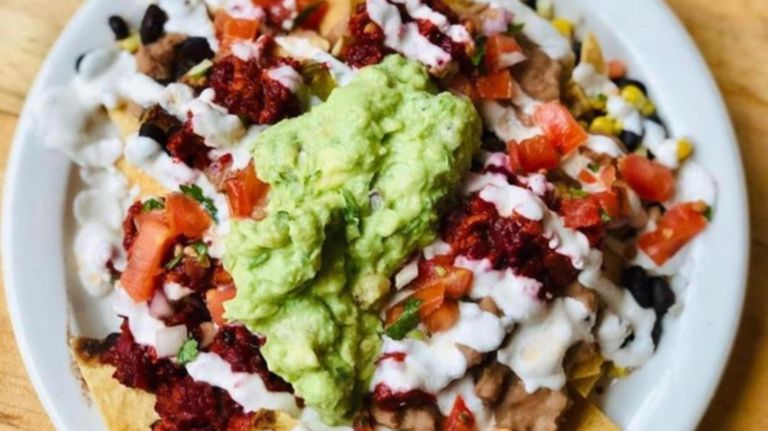
Testa also created dishes that still connected with his roots by choosing vegan sandwiches. He calls his style of cooking “nostalgic,” and any old-school style sandwich on his menu is inspired from his start in the food biz owning a deli.
“When people eat my food, I want it to touch their memories of home so that they can relate to it,” he said. “I also want to appeal to the crowds that don’t typically eat vegan food: they see these fatty, delicious dishes that remind them of meat dishes, and they go for it. After they have it, they’re pretty damn happy that they ordered it.”
Erica Sharkey, head chef at 1970s-inspired vegan restaurant Hartbreakers in Bushwick, Brooklyn, also understands how people connect emotionally with their food.
“Food is such a personal thing to most people and I think you need to find the sweet spot between familiarity and newness to intrigue people,” she said. “We take comfort food but put a fresh spin on it. I think that sounds appealing to anyone, vegan or not.
“We see known faces of the vegan community come back time and time again, but we also have a good amount of customers who come in and say, ‘I’m trying vegan food for the first time,’ or even ‘I didn’t know this place was vegan when I walked in, but it looks good so let me get something!’ and then they come back for more,” Sharkey said. “And that to me is so gratifying. As a vegan chef, all I want to do is feed people good food that makes them happy.”
Mimicking Meat
When eating these dishes it’s hard not to believe there are magicians in the kitchens. Matching all of the elements people love about meat and dairy — the creaminess, fattiness, the deep savory flavors — is a challenge, but one these chefs have embraced and mastered.
“The techniques that I used to mimic the flavor and textures of meat are purely based on finding the right product that had enough body to it, had enough chew to resemble that texture of meat, and then flavoring it using only natural additives to make it taste unctuous and smoky,” Testa said.
For the pastrami Reuben, he first slices the seitan to about 1/4" thickness to mimic pastrami. Afterward, he brines the slices for 36 hours with beet juice (for color), coriander, peppercorns, hickory smoke powder, salt and vegan Worcestershire sauce to give it a meaty, umami flavor. After soaking for 36 hours, he smokes it for three hours.
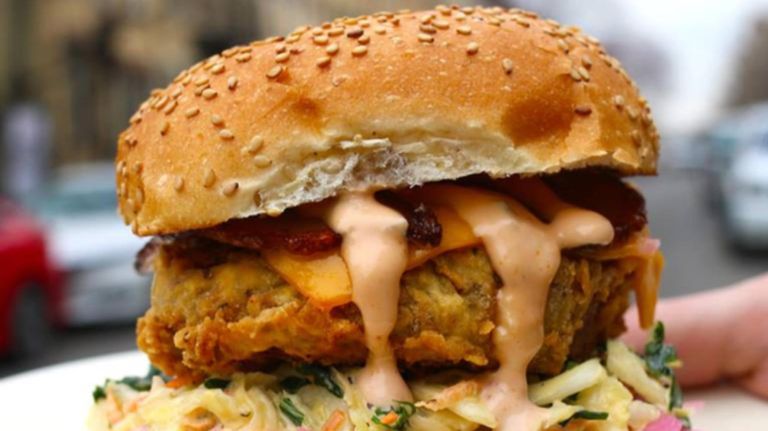
In the Ground Beet taco at Calexico, the team used tempeh and ground beets to try and mimic the texture of ground beef.
“We wanted to get the texture and flavor just right so we played with a few different options before landing on our current Ground Beet Taco,” Vendley said. This includes the cashew cream that we make in-house. Making sure it tasted like a Calexico taco was the biggest challenge.”
Hartbreakers makes all of their own seitan in-house, as well, but Sharkey actually isn’t a fan of most seitan, finding it too dense and chewy.
“So if we were going to experiment with doing all our own housemade seitan, I wanted to make sure we were serving something that was different than the seitan you get at every other vegan restaurant,” she said. The seitan is the main feature of the star menu item, the Picnic Basket, which is a fried “chik’n” sandwich with creamy green cabbage slaw, tangy pickled red onions, Cheddar cheese, crispy housemade seitan bacon, and mondo sauce (their house sauce — think Big Mac sauce).
“The final product came from months of recipe testing, and putting my faith in the magic of chickpeas,” Sharkey said. “I didn’t want it to necessarily mimic meat perfectly, I just wanted a quality, tasty, handmade product that was delicious to both vegans and non-vegans, and kept them coming back for more.”



